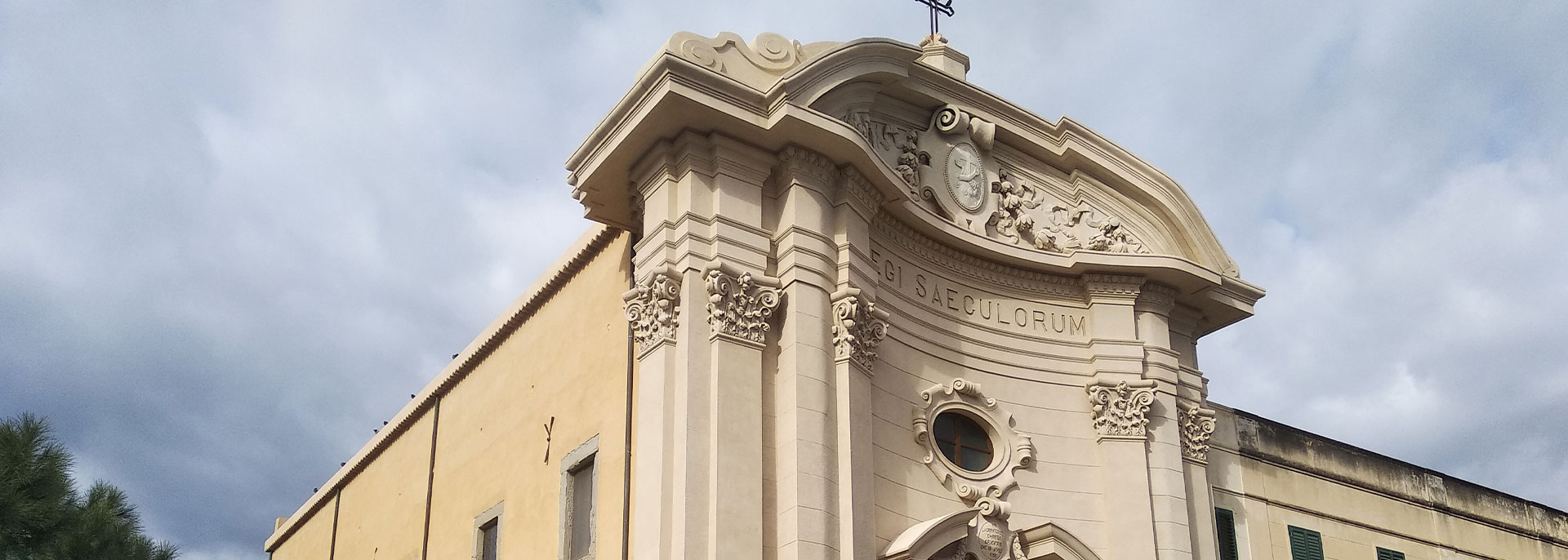In a wide open space, stood at the beginning of the seventeenth century the convent of the Franciscan Reformed Fathers annexed to the church of the Crucifix.
The site had already been used in ancient times for places of worship mentioned by Perdichizzi: the veneration for the Eastern martyr Papia was based on a legend that told the arrival of the saint’s remains on the beach of Ponente, miraculously brought by the sea.
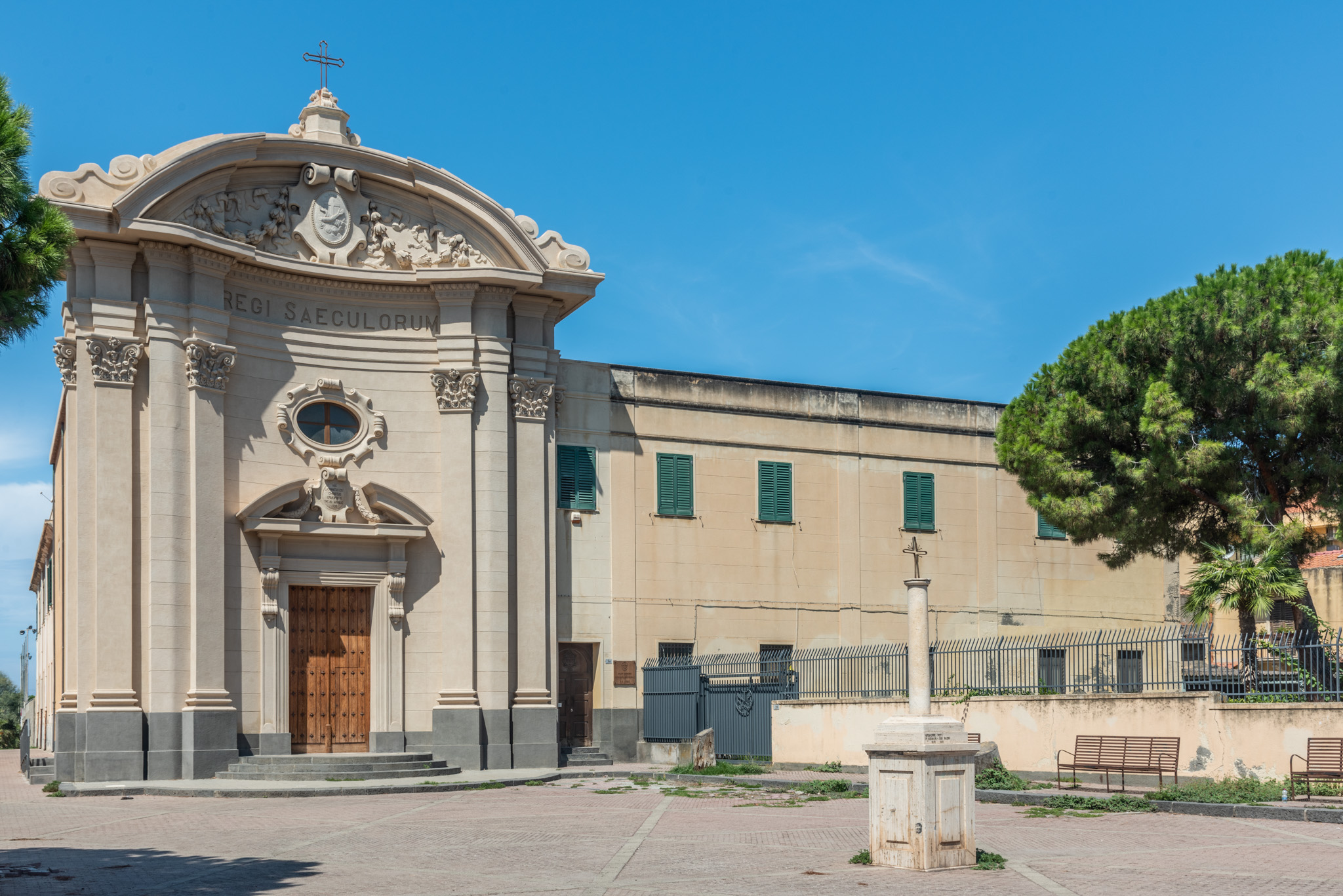
Church of Santissimo Crocifisso
An ancient church, perhaps dedicated to the Madonna of Lampedusa, had been restored in 1566. In 1618 the Reformed Fathers built their convent at the pre-existing church and in 1629 began the reconstruction of the church and convent according to a project financed by the city. The official acts slightly modify the literary data : it turns out that the work of the convent had begun in 1620 and that in the same year the civic administration had officially assigned the site, to work begun, to the friars; in 1627 the church had been brought to a good point thanks to the alms requested also to the municipality, which poured further donations in 1628 and 1630.

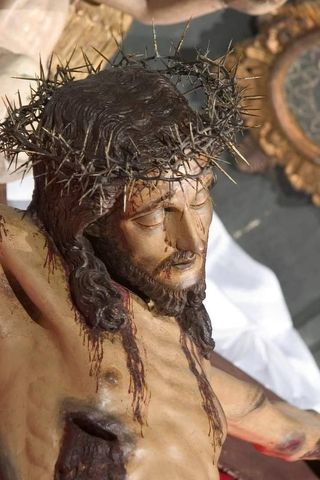
He recalls Perdichizzi that in his time there were only the high altar and the altars of Our Lady of Providence and the Crucifix. During the siege of 1718 the monastic complex suffered serious destruction: according to Piaggia a dormitory collapsed and only part of the choir remained standing. There is no information on the reconstruction of the eighteenth century: probably dates back to this phase the grandiose wooden altar made by Friar Lodovico Calascibetta da Petralia Sottana, died in 1729, being unlikely that the realization could have escaped the destruction of the church. Important funerary monuments were erected during the eighteenth century by some private families and in 1798 the cult of the Crucifix received new strength from the miraculous tear of the simulacrum of friar Umile da Petralia.
In 1934 the entire complex was remodelled and the church was equipped with a new façade designed by Giuseppe Mallandrino, which was inspired by the architecture of the eighteenth century eclectically reformulated Sicilian. The interior of the church received a new arrangement and was frescoed by Salvatore and Guido Gregoretti. An examination of the state of the complex makes it possible to identify the various construction phases. The convent, rectangular in plan, is articulated around the cloister supported by simple columns in sandstone of Tuscan order; a cistern opens on the southern side and remains of frescoes are noted in some lunettes, particularly in the entrance. On the ground floor there is the vast environment of the refectory where there is an ancient painting depicting the Last Supper. The outer shell of the building has suffered greatly from the alterations but there is no reason to believe that Mallandrino has substantially changed the distribution of the openings and the characters of the austere building.
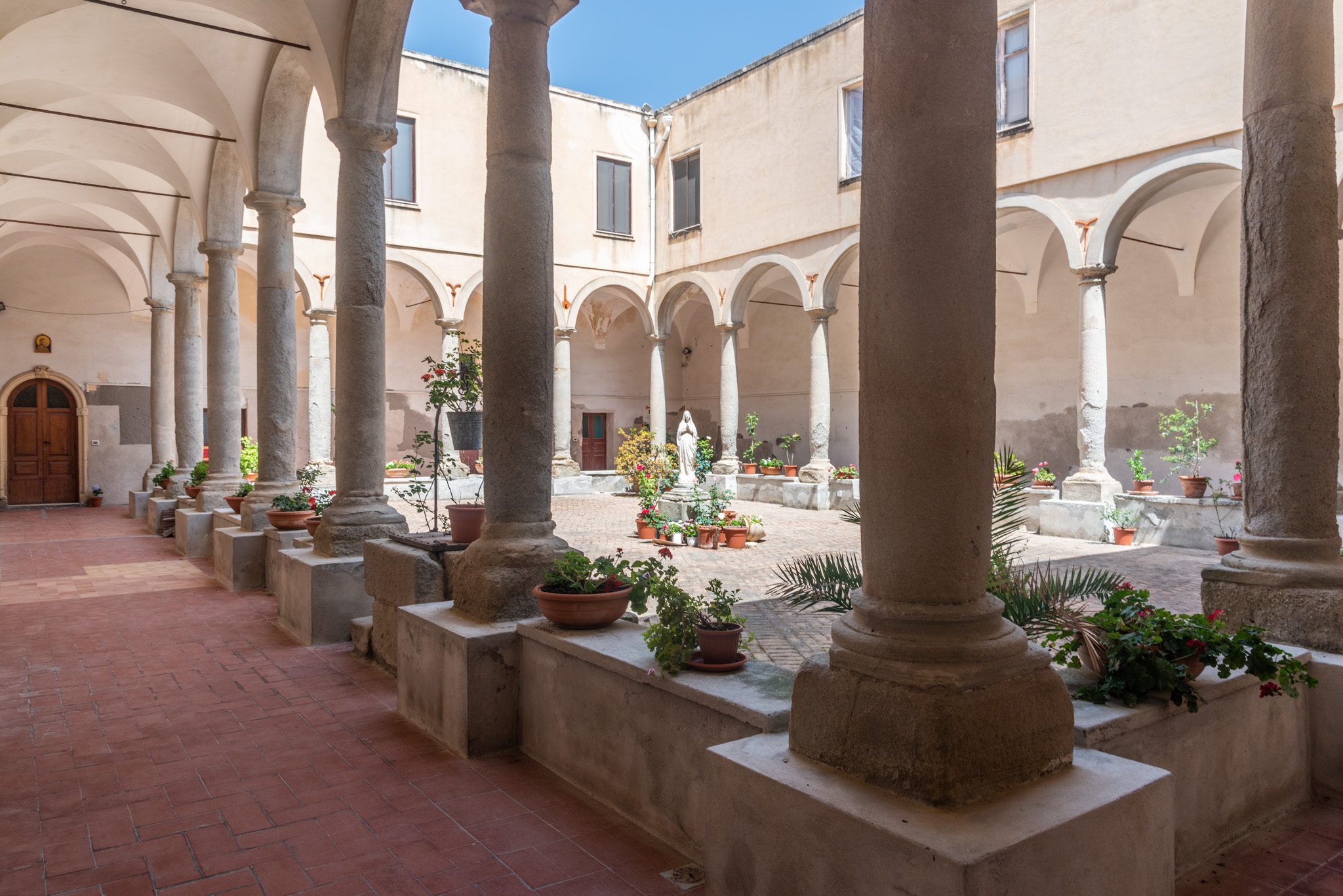
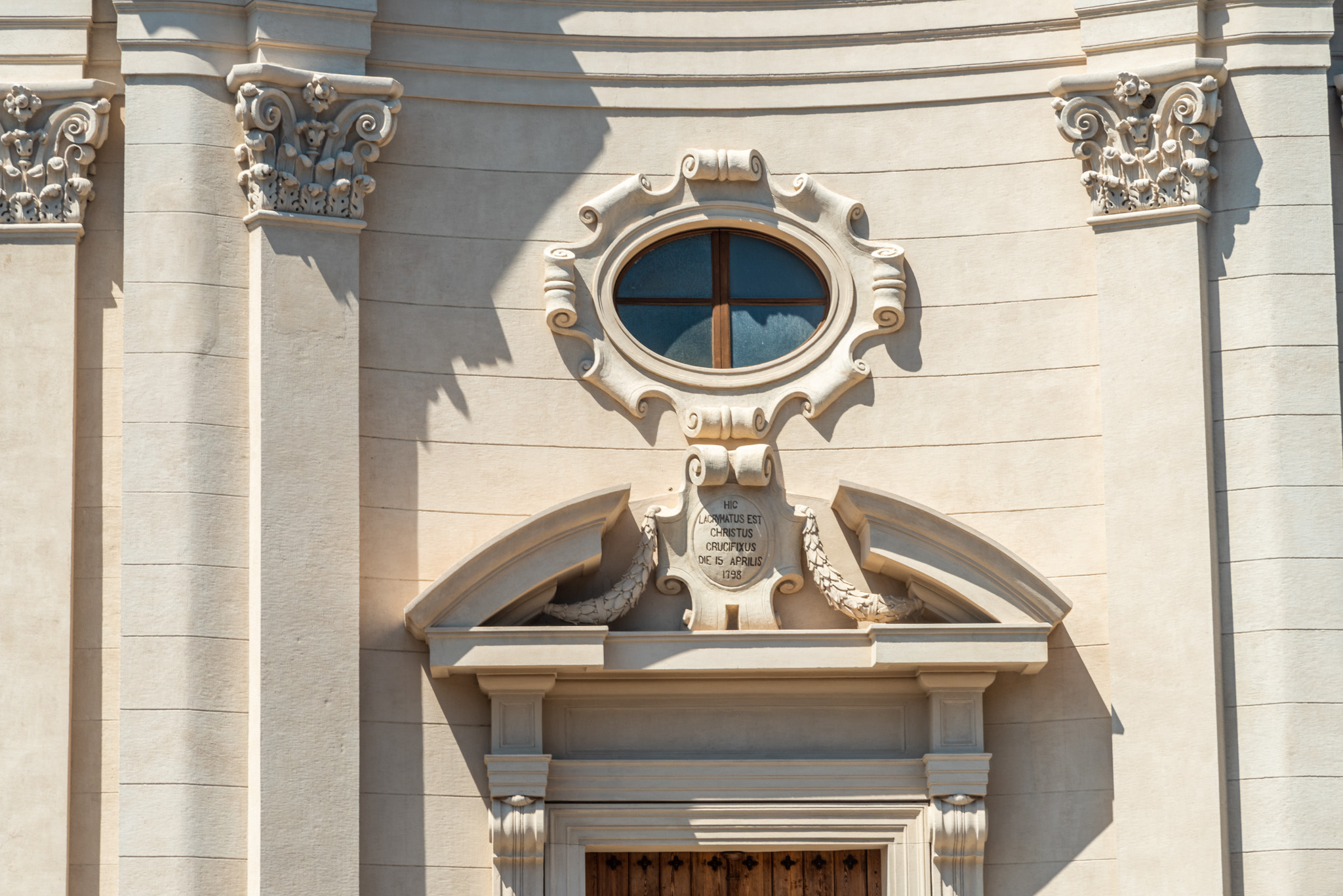
Attached to the monastery was a large garden that extended towards the sea and its relevance must have been the houses on Via Grotta Polifemo, survived in nineteenth-century appearance, as evidenced by a Franciscan coat of arms on the last house at n. 43. In the vast floor of the church stands a cruciferous column of ancient structure but recently restored in the base that has been covered with marble slabs.
The façade of the church has a single order with giant Corinthian pilasters combined that flank the sober portal with a broken tympanum on which opens an elegant oculus: a showy concave-convex movement animates the facade, involving the large tympanum with Franciscan coat of arms between heavy festoons and volutes.
The interior has a single nave with a quadrangular apse and pronaos.
In the nave there are three altars on each side, arranged symmetrically within arches: the current arrangement is affected by recent interventions, with marble of little value except the eighteenth-century inlaid frontal of the altar of San Pasquale. All are equipped with rather recent polychrome statues: you can remember that of Our Lady of Providence whose worship is already attested by Perdichizzi. However, the writer mentions a marble statue that may have been destroyed in 1718. A plaque (The devotees // Cav. F.sco Iannello // F.sco Daví // 1903) recalls the works of restoration.
The altar of the Crucifix is of great importance: it was carved in 1635 by Brother Umile da Petralia at the expense of the Baele family.
The back wall of the chapel, circumscribed by the arch, has been arranged (covering a previous painting of the Marys at the foot of the Crucifix) with ancient reliquaries in display cases and richly carved wooden frames. The altar has been reworked with 19th century marble.

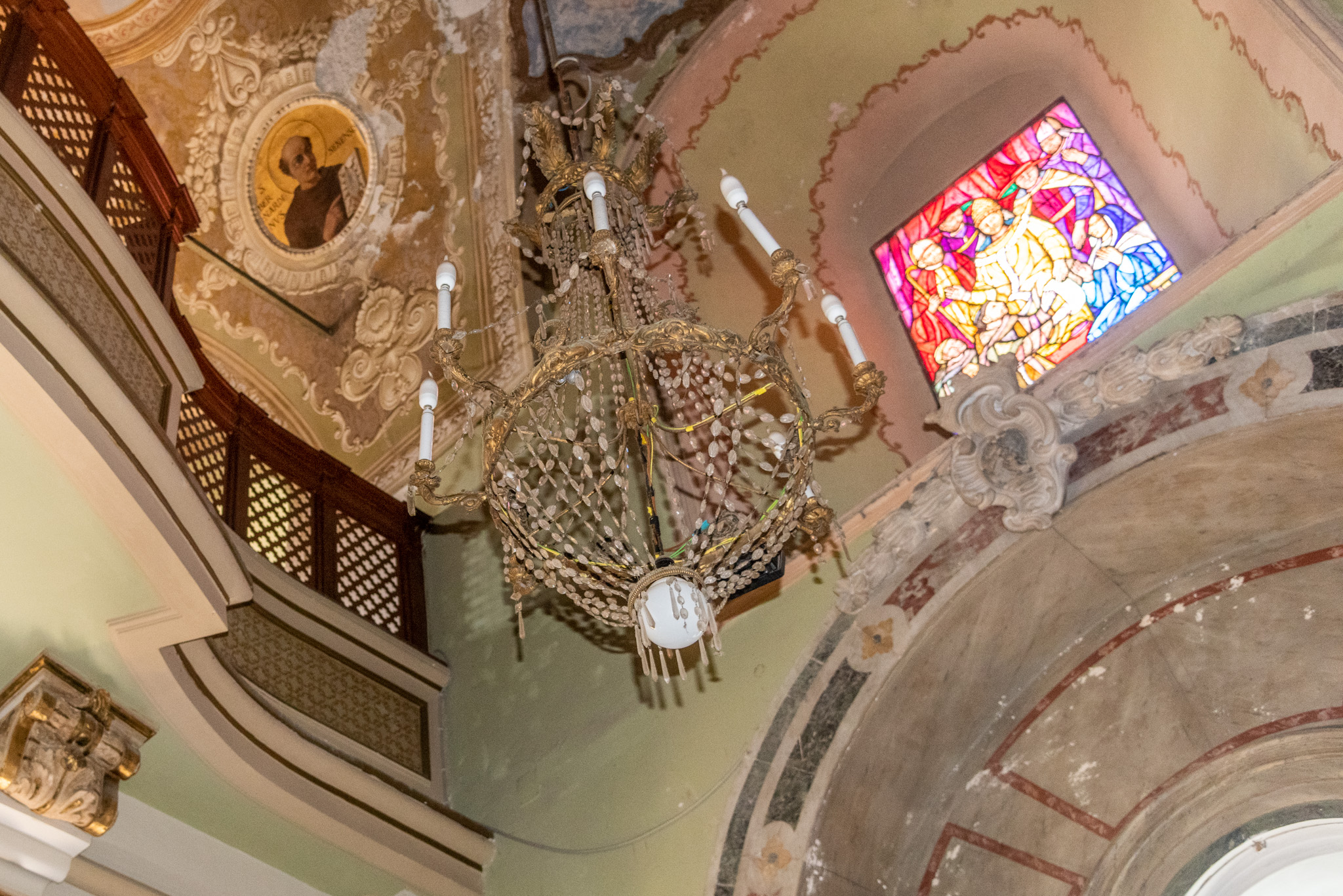
The frescoes painted by the Gregorietti in 1934 depict the apotheosis of Saint Francis in the vault and episodes of the life of the saint in the sails.
Historical inscriptions and the 1885 D'Amico monument are arranged at the entrance. Next to the main door is the Zirilli monument of 1769 with large marble portrait of the deceased within oval from the inlaid frame, accompanied by the family coat of arms.
At the center of the nave are the monuments dedicated to Caterina Patti Lucifero (1750) and the marquis Antonio D'Amico (1761), impressive marble works richly inlaid, with sarcophagi, allegorical statues and large portraits of the characters.
Numerous inscriptions published at the time by Piaggia have been lost following the reconstruction of the pavement.
The arrangement of the sacristy dates back to the works carried out in 1934, as revealed by the imposing wooden wardrobe with sober eclectic lines. There is a marble basin with cherub.
INDIRIZZO
Church of Santissimo Crocifisso in San Papino Martire Piazza san Papino 33, Milazzo (ME) Tel. 090/9286194







